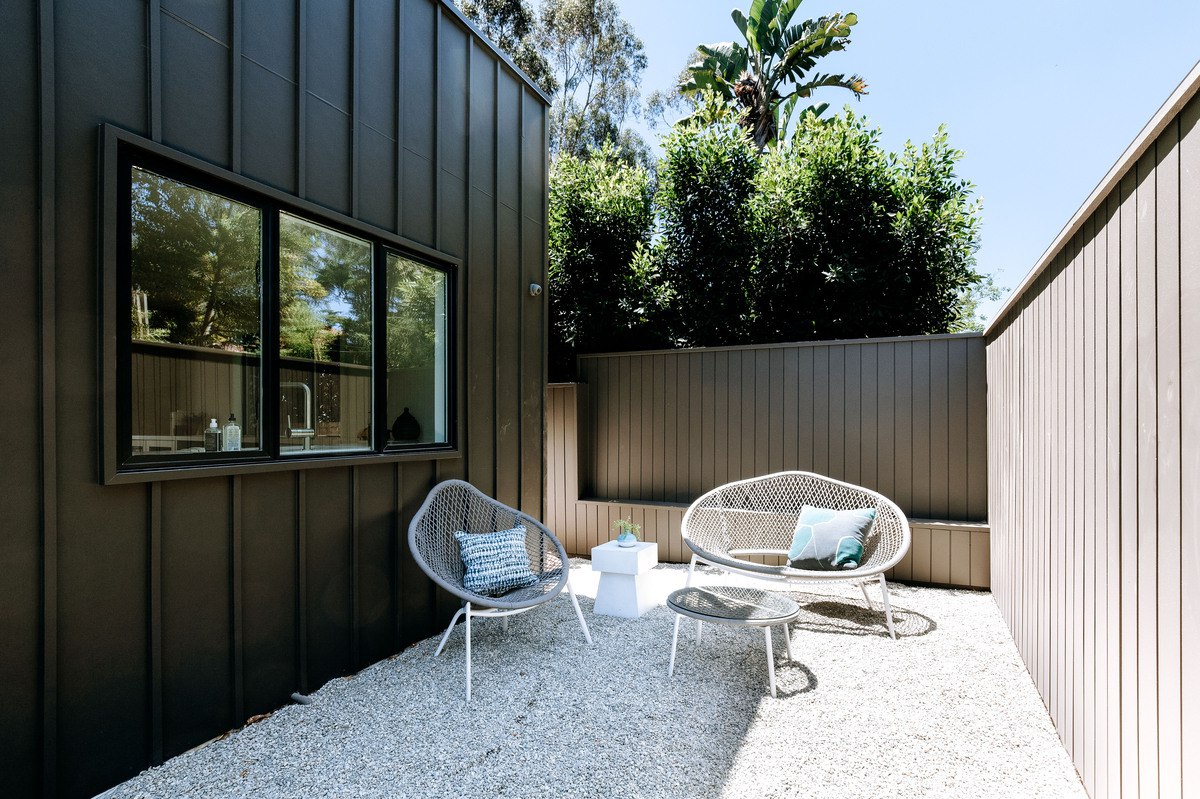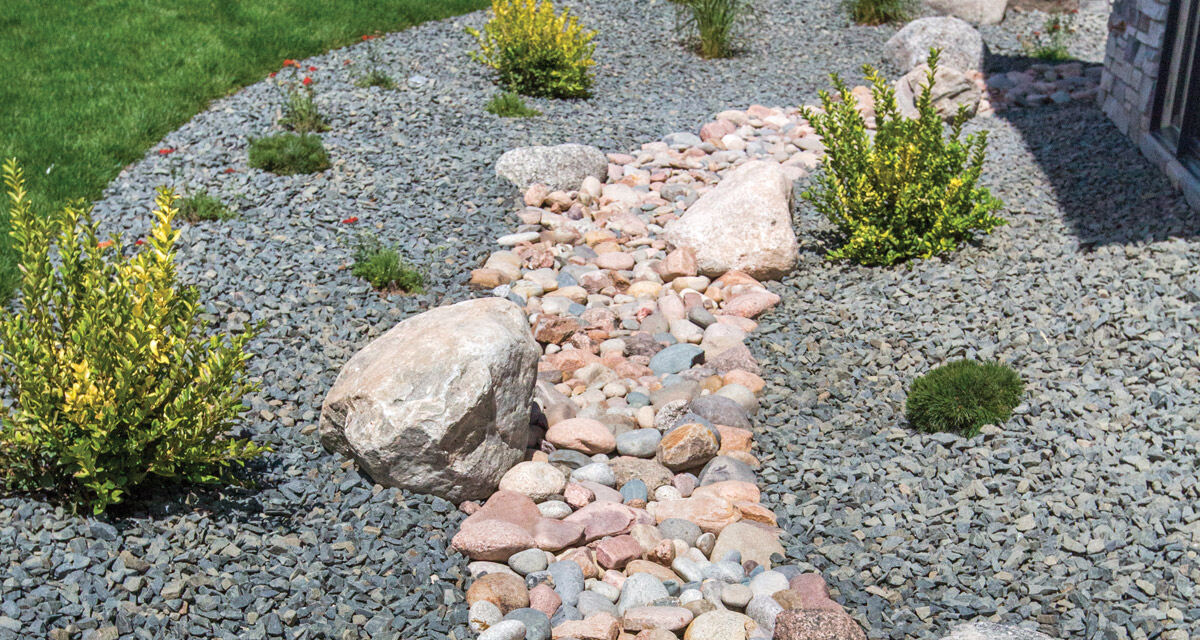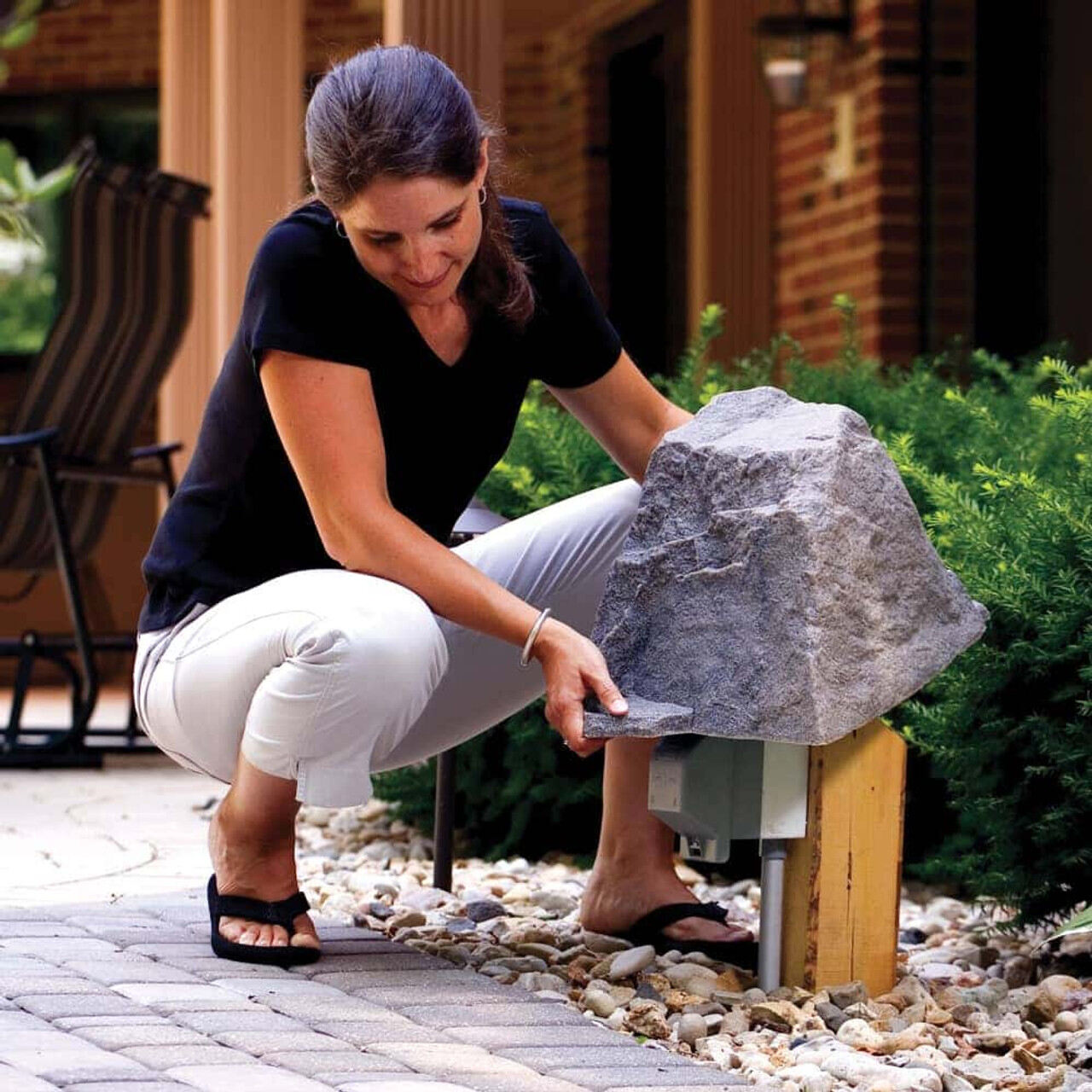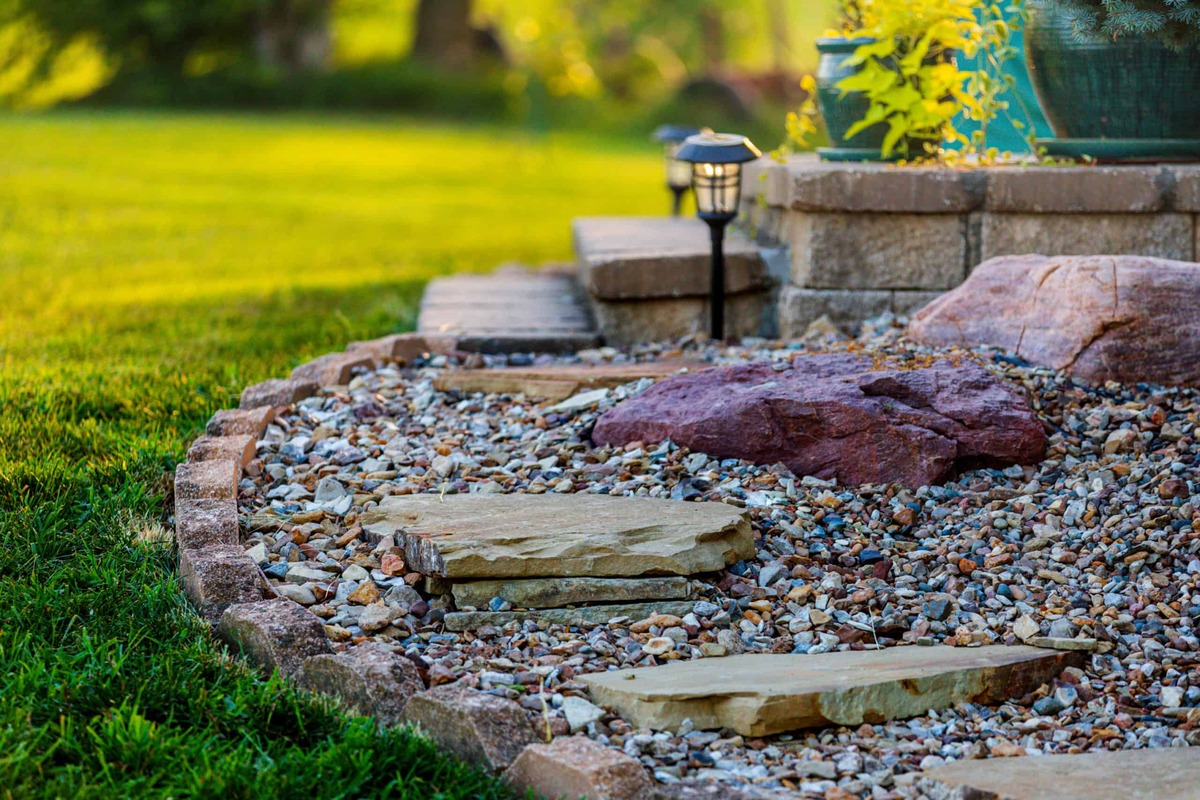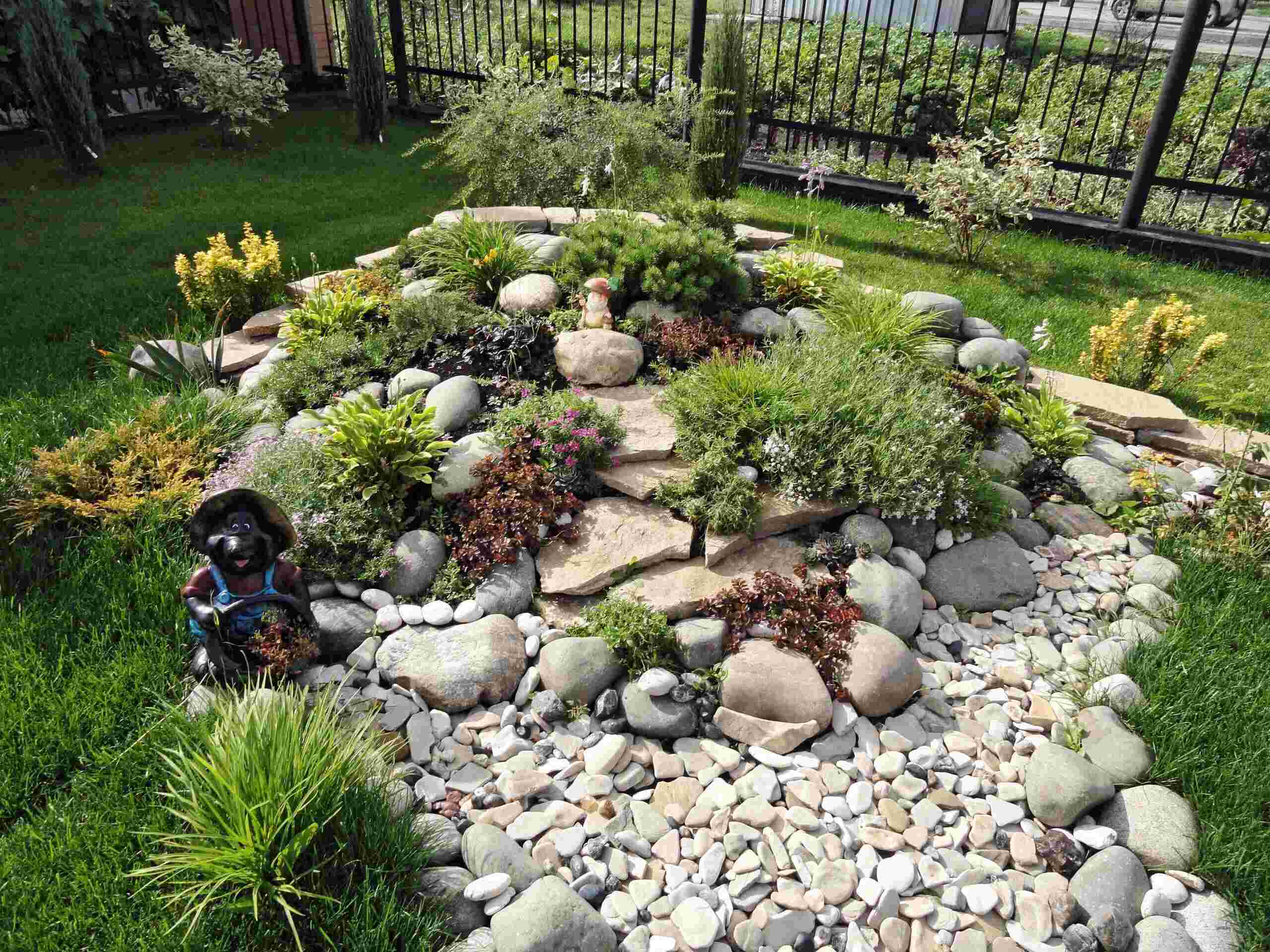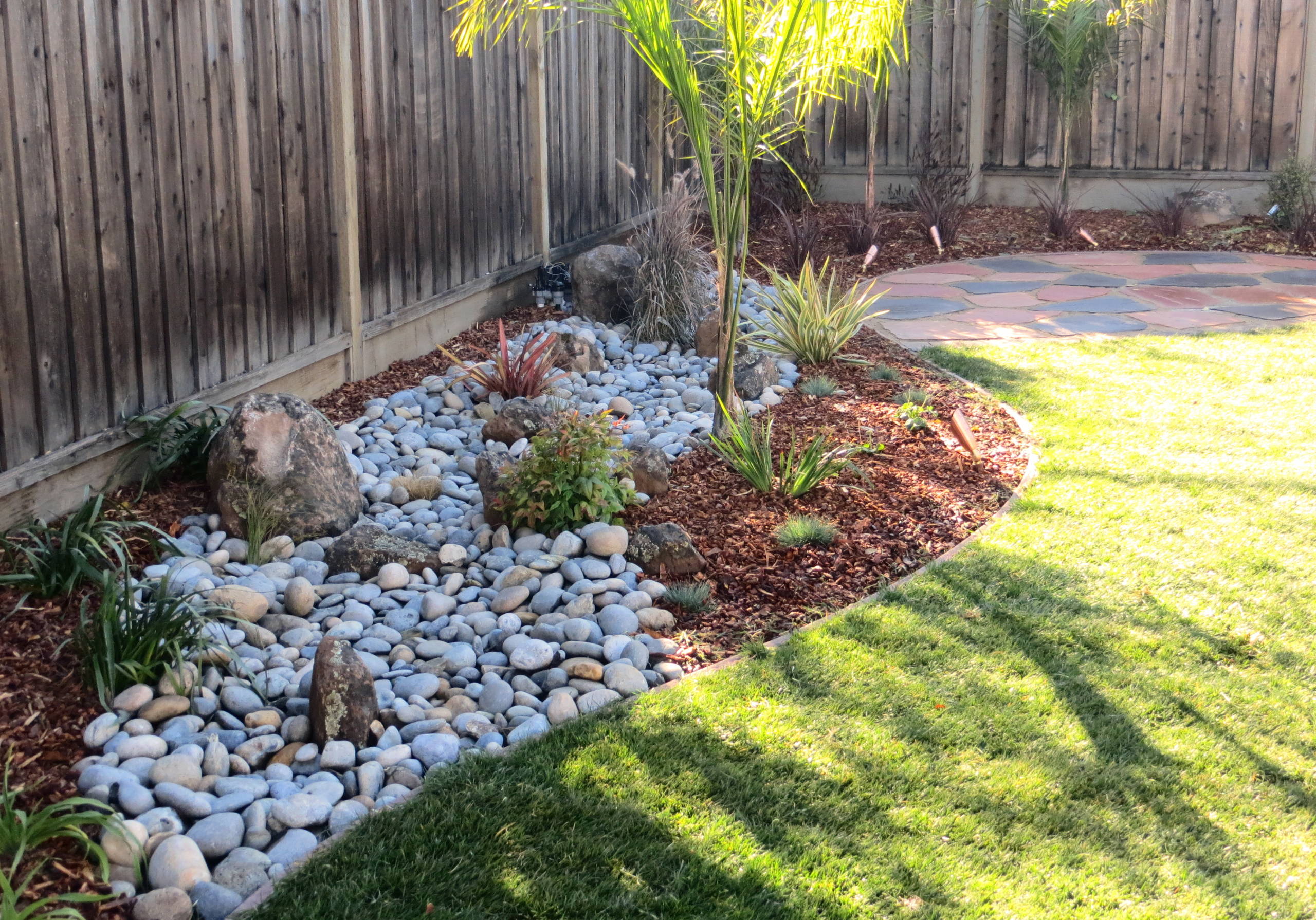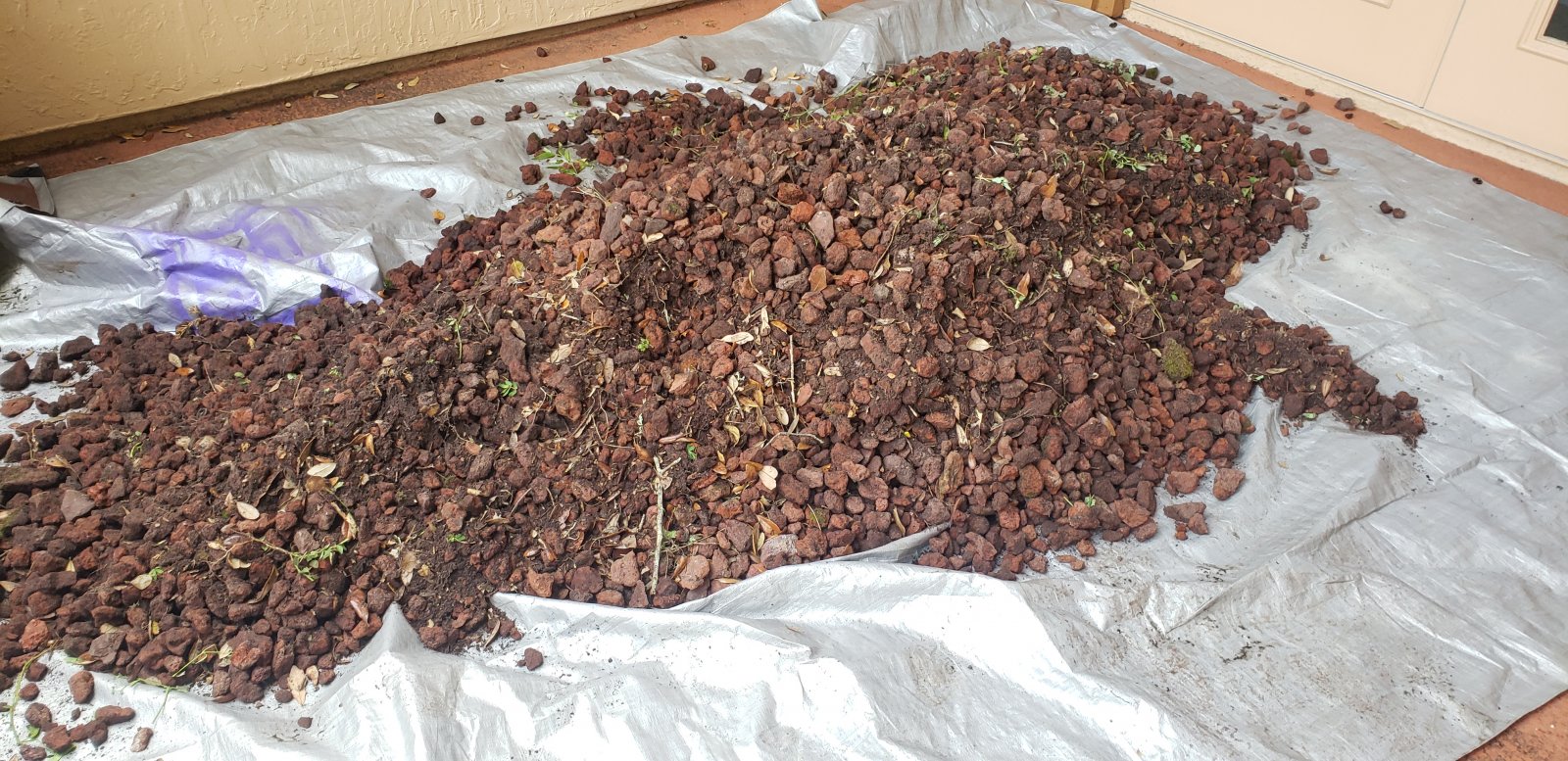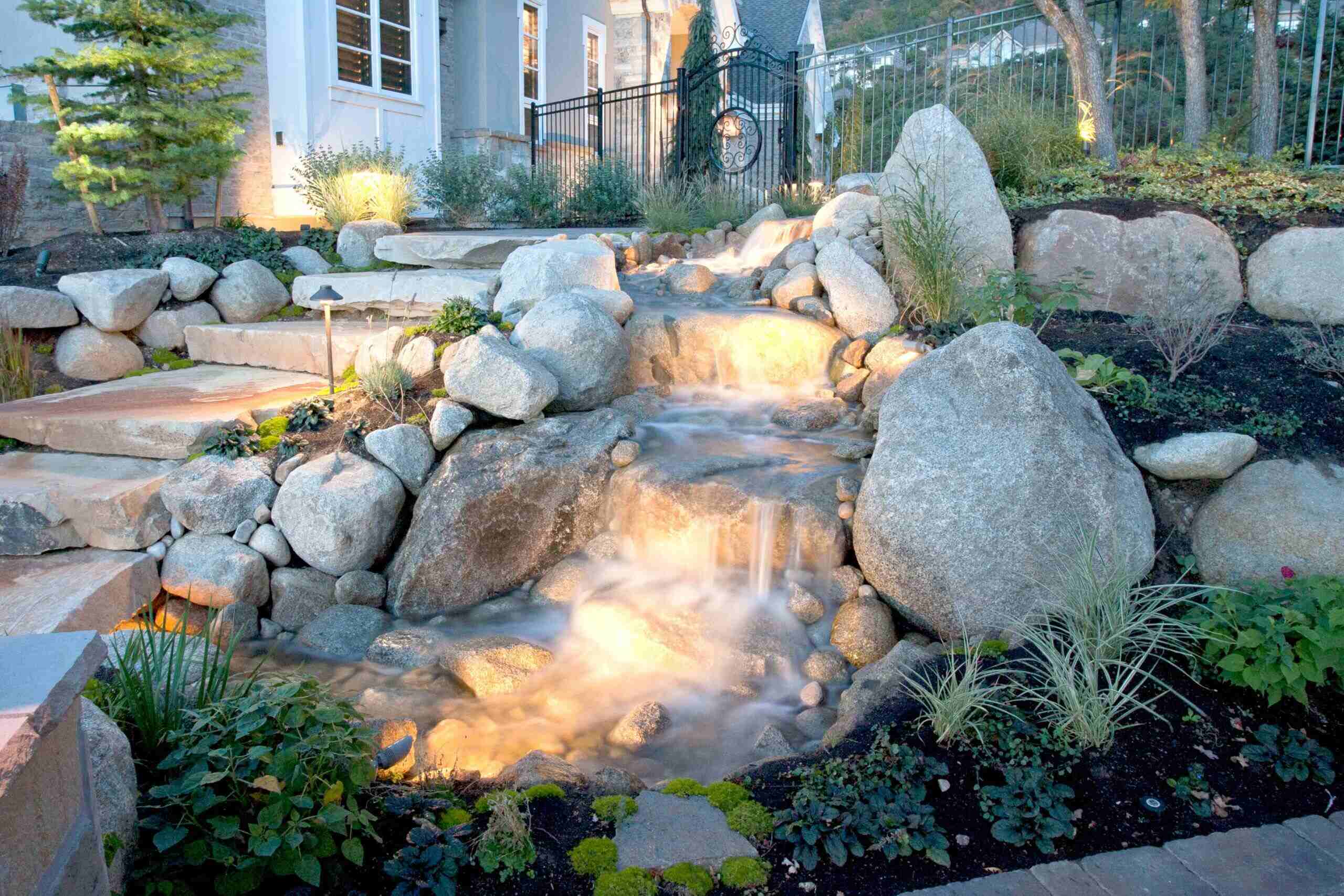Home>Garden Design>Landscape Design>What Rocks To Use For Landscaping
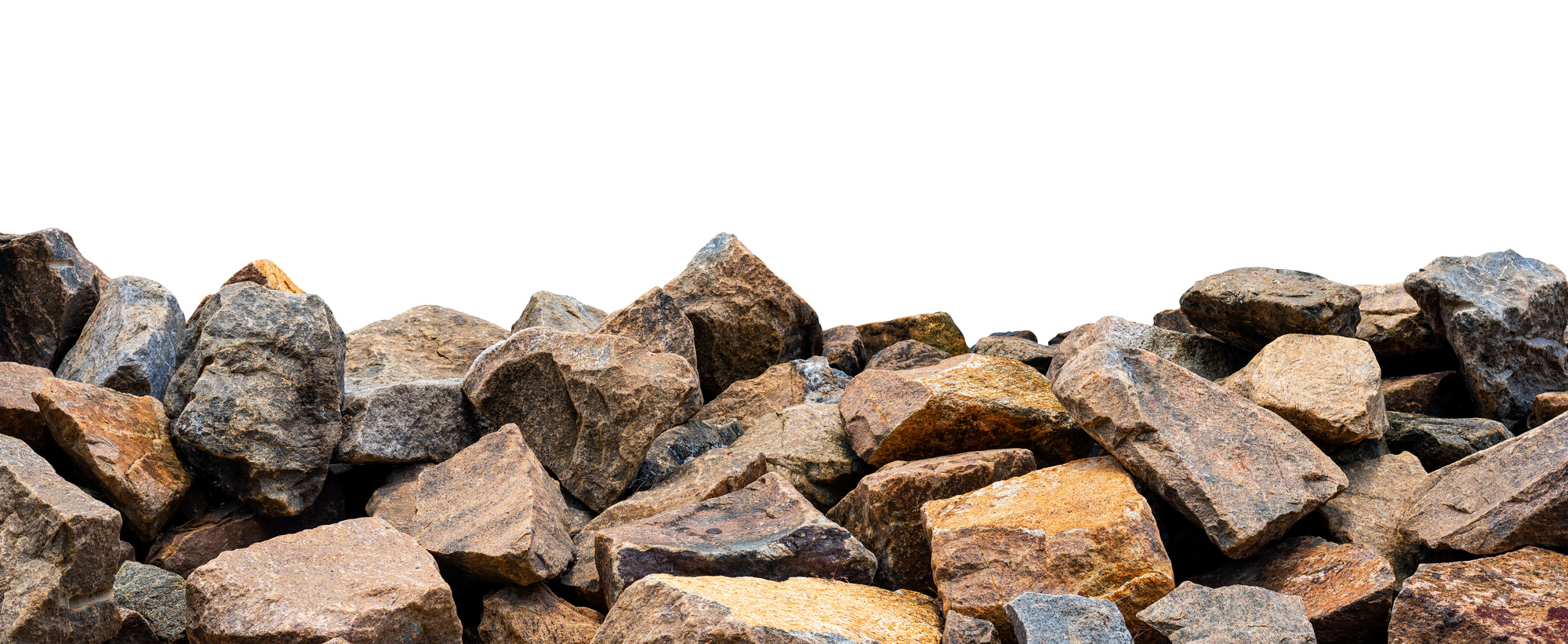

Landscape Design
What Rocks To Use For Landscaping
Modified: February 8, 2024
Enhance your landscape design with the perfect rocks for landscaping. Discover the best options and transform your outdoor space with ease.
(Many of the links in this article redirect to a specific reviewed product. Your purchase of these products through affiliate links helps to generate commission for Chicagolandgardening.com, at no extra cost. Learn more)
Table of Contents
- Introduction
- Types of Rocks for Landscaping
- River Rocks
- Gravel
- Flagstone
- Boulders
- Lava Rock
- Crushed Stone
- Factors to Consider When Choosing Rocks
- Aesthetic Appeal
- Functionality and Purpose
- Cost
- Maintenance
- Tips for Landscaping with Rocks
- Plan and Design
- Proper Placement
- Layering and Texturing
- Using Rocks in Water Features
- Conclusion
Introduction
Welcome to the world of landscaping, where creativity meets the beauty of nature. If you’re looking to transform your outdoor space into a stunning oasis, rocks can be a game-changer. Incorporating rocks into your landscape design adds texture, dimension, and a unique aesthetic appeal.
Landscaping with rocks not only enhances the visual appeal of your outdoor space but also provides practical benefits such as erosion control and weed suppression. The use of rocks in landscaping has gained popularity due to its versatility and low maintenance requirements.
In this article, we will explore different types of rocks that you can use to elevate your landscaping projects. From river rocks to boulders, each type offers distinct characteristics and can bring your design vision to life. We will also delve into important factors to consider when choosing the right rocks for your landscape, as well as expert tips for their proper placement and usage.
Whether you’re creating a serene Zen garden, building a charming pathway, or adding visual interest to your flower beds, rocks are an essential element that can transform your outdoor space into a picturesque haven.
So, let’s dive in and explore the world of rocks for landscaping, discovering the endless possibilities they offer for creating captivating and inviting outdoor environments.
Types of Rocks for Landscaping
When it comes to landscaping with rocks, there is a wide variety of options to choose from. Each type of rock brings its own unique characteristics and can be used to create different effects in your outdoor space. Let’s explore some popular types of rocks that are commonly used in landscaping:
-
River Rocks
River rocks, also known as pebbles or creek stones, are smooth and rounded stones that are typically found in riverbeds or along shorelines. They come in various sizes, ranging from small pebbles to larger stones. River rocks add a natural and organic feel to your landscape design. They are often used for creating dry riverbeds, borders around plants or trees, and as a decorative element in garden beds.
-
Gravel
Gravel is a versatile rock option that can be used for various landscaping purposes. It consists of small, smooth stones that are available in a range of sizes and colors. Gravel is commonly used for creating driveways, pathways, and patio areas. It provides a stable surface and allows for proper drainage. You can also use gravel to add texture and contrast to your garden beds or as a base for other landscaping elements.
-
Flagstone
Flagstone is a flat and thin sedimentary rock that is ideal for creating natural-looking pathways and stepping stones. It has a unique texture and comes in a variety of colors, including earth tones ranging from browns to grays. Flagstone can be arranged in different patterns to add visual interest to your outdoor space. Its durability and slip-resistant surface make it a popular choice for both functional and decorative purposes.
-
Boulders
Boulders are large rocks that make a bold statement in your landscaping design. They are available in various sizes, shapes, and colors, giving you the opportunity to create dramatic focal points or stunning rock formations. Boulders can be used to anchor an area or add height and dimension to your landscape. They can also serve as natural seating areas or provide habitat for wildlife.
-
Lava Rock
Lava rock, as the name suggests, is formed from solidified lava and has a porous texture. It is lightweight and comes in shades of red, brown, or black. Lava rock is commonly used for decorative purposes, such as mulching around plants, creating contrast in garden beds, or covering bare soil in areas prone to erosion. It retains heat well and can help in warming the soil in cooler climates.
-
Crushed Stone
Crushed stone is a versatile and affordable option that can be used for a variety of landscaping projects. It is made by crushing large rocks into smaller pieces and is available in different sizes and textures. Crushed stone can be used for creating pathways, driveways, or as a base for patios. It provides excellent drainage and is often used in areas where water runoff is a concern.
These are just a few examples of rocks that can be used in landscaping. Each type has its own unique characteristics and benefits. Consider the overall design of your outdoor space and the desired effect you want to achieve when choosing the rocks to incorporate into your landscape.
River Rocks
River rocks, also known as pebbles or creek stones, are a popular choice for landscaping due to their natural beauty and versatility. These smooth and rounded stones are typically found in riverbeds or along shorelines, giving them their distinct shape and texture.
One of the main advantages of using river rocks in landscaping is their ability to create a natural and organic feel in your outdoor space. The smoothness and rounded edges of these rocks add a calming and serene element to the overall design. They can be used to create dry riverbeds, which mimic the look of a flowing stream, or as borders around plants and trees, providing a polished and finished appearance.
Another benefit of river rocks is their wide range of sizes. They come in various dimensions, from small pebbles to larger stones, allowing for creative freedom in designing your landscape. You can mix and match different sizes to create visual interest and texture in flower beds or garden pathways.
When it comes to color, river rocks are typically available in earthy tones such as browns, grays, and tans. These neutral hues blend seamlessly with the surrounding elements of your landscape, creating a cohesive and natural look. However, you can also find river rocks in other shades, such as white or black, to add contrast and make a bold statement.
In terms of functionality, river rocks offer practical benefits as well. They are excellent for erosion control, as their weight and shape help prevent soil runoff during heavy rain. They also act as a barrier, reducing weed growth and minimizing the need for constant maintenance in your garden beds.
When incorporating river rocks into your landscaping, it’s important to consider their placement. Use them strategically to define specific areas or create focal points in your outdoor space. They can be arranged in a meandering pattern to imitate the flow of a river or placed strategically around plants and shrubs to provide a visually appealing contrast.
Above all, river rocks bring a sense of tranquility and natural beauty to any landscape design. Whether you’re aiming for a Zen garden or a picturesque oasis, these rocks will undoubtedly enhance the aesthetic appeal of your outdoor space.
Gravel
Gravel is a versatile and popular choice for landscaping due to its numerous practical uses and aesthetic appeal. Comprising small, smooth stones, gravel offers a range of benefits that make it suitable for various outdoor projects.
One of the primary advantages of using gravel in landscaping is its ability to create functional and stable surfaces. Whether you’re looking to build a driveway, pathway, or patio area, gravel provides a durable and reliable foundation. Its compact nature allows for easy walking and driving, while also offering proper drainage to prevent water buildup.
Gravel is available in a wide range of sizes and colors, making it easy to find the perfect match for your design vision. From tiny pebbles to larger stones, you can choose the size that best suits your desired aesthetic and functional requirements. Additionally, gravel comes in various colors, including natural earth tones and vibrant hues, allowing you to create unique and visually appealing landscapes.
In garden beds, gravel serves multiple purposes. It acts as a barrier against weeds, reducing the need for frequent maintenance. The stones create a protective layer that prevents sunlight from reaching the soil, hindering weed growth. Additionally, gravel can help to retain soil moisture, reducing the need for frequent watering.
When using gravel in your landscaping, consider its placement and layering. Creating distinct areas with different sizes or colors of gravel can add depth and texture to your outdoor space. You can use larger stones to define pathways or borders, while smaller gravel can be spread evenly in flower beds to provide a cohesive and visually appealing look.
Furthermore, gravel can be used to add contrast and texture to your landscape design. Mixing different sizes or colors of gravel can create interesting patterns or visual focal points. It can also be used as a base layer for decorative elements such as statues or planters, adding stability and enhancing their overall aesthetic appeal.
Lastly, gravel is a low-maintenance option for landscaping. Unlike grass or other groundcovers, gravel does not require mowing, watering, or frequent upkeep. This makes it an excellent choice for those seeking a simple and hassle-free outdoor space.
Incorporating gravel into your landscaping design offers a versatile and practical solution. Its durability, easy maintenance, and aesthetic appeal make it a go-to choice for many homeowners looking to enhance their outdoor areas.
Flagstone
Flagstone is a versatile and visually appealing option for incorporating natural elements into your landscape design. This thin and flat sedimentary rock is commonly used for creating pathways, stepping stones, and patio areas in outdoor spaces.
One of the main advantages of using flagstone in landscaping is its unique texture. The uneven surface and natural variations in color and pattern create a rustic and organic look. Flagstone is available in a range of earthy tones, including browns, grays, and blues, allowing you to choose the color that best complements your existing outdoor elements.
The irregular shape and size of flagstone stones provide endless design possibilities. They can be arranged in different patterns, such as a random mosaic or a more structured geometric layout. This flexibility allows you to create a customized pathway or patio area that perfectly fits your style and complements the overall aesthetic of your outdoor space.
Flagstone is not only visually appealing but also highly durable. It can withstand heavy foot traffic and is resistant to cracking or fading, ensuring its longevity and functionality. Its slip-resistant surface makes it a safe option for walking paths or areas where traction is essential.
Another advantage of flagstone is its natural cooling properties. It absorbs heat from the sun, keeping the surface cooler than other materials, such as concrete or asphalt. This makes it an ideal choice for outdoor seating areas, where you can enjoy the beauty of your garden or the view while staying comfortable even on hot summer days.
When installing flagstone, it’s important to ensure a stable and level surface. Proper placement and installation techniques are essential to prevent shifting or uneven surfaces over time. Some homeowners choose to set the flagstone in mortar, while others opt for the more natural method of setting the stones into a sand or gravel base.
In addition to pathways and patios, flagstone can be used to create other landscape features such as retaining walls, garden borders, or outdoor fireplace surrounds. Its versatility and natural beauty make it a popular choice for both functional and decorative purposes in landscaping.
Whether you’re looking to create an enchanting garden pathway or a cozy outdoor patio area, flagstone provides a timeless and elegant solution. Its natural beauty, durability, and versatility make it a perfect choice for adding a touch of rustic charm to your outdoor space.
Boulders
Boulders are a captivating element that can make a dramatic statement in your landscape design. These large and imposing rocks bring a sense of grandeur and natural beauty to any outdoor space.
One of the key advantages of using boulders in landscaping is their ability to create focal points and anchor areas. Their size and unique shapes draw the eye and add a sense of visual interest to your landscape. Boulders act as natural sculptures, providing a striking contrast to the surrounding elements and adding a touch of rugged elegance to your outdoor space.
When incorporating boulders into your landscaping, it’s important to consider their placement carefully. They can be strategically positioned to create a sense of balance and harmony in your design. For example, placing a boulder at the end of a pathway or near a water feature can create a sense of arrival and draw attention to key areas of your outdoor space.
Boulders also add height and dimension to the landscape. They can be used to create terraced areas or provide a natural backdrop for other features such as gardens or seating areas. Additionally, boulders can serve functional purposes, such as retaining walls or steps, while still maintaining their aesthetic appeal.
Another advantage of using boulders is their longevity and durability. These rocks are naturally resistant to weathering and erosion, making them a long-lasting addition to your landscape. Their rugged texture and natural color variations blend seamlessly with the surroundings, creating a cohesive and organic look.
Boulders also offer habitat for wildlife, providing shelter and creating a natural ecosystem within your outdoor space. They can attract birds, small mammals, and even beneficial insects, adding life and biodiversity to your landscape.
When working with boulders, it’s important to consider the overall scale and proportion of your landscape. Choose boulders that complement the size of your outdoor space and other elements within it. Mixing different sizes and shapes of boulders can create a more dynamic and visually appealing composition.
Whether you’re creating a rock garden, designing a natural-looking retaining wall, or simply adding a focal point to your landscape, boulders offer a timeless and majestic touch. Their presence brings a sense of strength and majesty to your outdoor space, making them a popular choice in landscaping design.
Lava Rock
If you’re looking to add a touch of bold color and texture to your landscape, lava rock is an excellent choice. Formed from solidified lava, this lightweight and porous rock offers a unique aesthetic appeal and numerous practical benefits.
One of the key advantages of using lava rock in landscaping is its striking color. Available in shades of red, brown, or black, lava rock creates a vibrant and eye-catching contrast in your outdoor space. The rich hues bring warmth and visual interest to garden beds, borders, or as a ground cover.
Aside from its visual appeal, lava rock also has functional properties. Due to its porous nature, it aids in both water retention and drainage. Lava rock can help regulate soil moisture levels by absorbing excess water during heavy rains and slowly releasing it back into the soil as needed. This makes it an ideal choice for areas prone to both drought and heavy rainfall.
Another benefit of lava rock is its ability to retain heat. In cooler climates, it can help warm the soil, promoting healthy plant growth. Additionally, the heat retention property makes lava rock a popular choice for use in fire pits or as decorative mulch around heat-loving plants.
Lava rock is lightweight and easy to work with, making it a convenient option for DIY landscaping projects. Its lightweight nature also means it can easily be transported and distributed in various areas of your outdoor space.
When using lava rock, proper placement is important. Consider the area’s aesthetic and functional requirements. It can be used as ground cover in garden beds, pathways, or around plants to suppress weed growth. Lava rock can also be utilized as a decorative element, adding texture and color to your landscape design.
Despite its porous nature, lava rock is known to be long-lasting and low-maintenance. It does not decompose or erode easily, making it a durable choice for outdoor areas. It requires minimal upkeep, typically only needing occasional raking or removal of debris.
While lava rock is generally safe to use in landscaping, it’s important to note that it can be sharp and abrasive. Handle it with care to avoid potential injuries and always wear protective gloves when working with it.
Incorporating lava rock into your landscape design allows you to add a unique and visually striking element to your outdoor space. Its vibrant colors, water retention properties, and heat retention make it a versatile and eye-catching choice for landscaping purposes.
Crushed Stone
Crushed stone is a versatile and cost-effective option for landscaping projects. This material is created by crushing large stones into smaller pieces, resulting in a range of sizes and textures that can be used in various ways.
One of the primary advantages of using crushed stone in landscaping is its versatility. It can be used for a wide range of applications, such as creating pathways, driveways, or as a base for patios and other hardscape features. Crushed stone provides a stable and durable surface that can withstand heavy foot traffic and vehicle use.
Available in different sizes, crushed stone allows for greater customization and design flexibility. Smaller stones, such as pea gravel, are perfect for creating intricate patterns or for filling gaps between larger stones. While larger stones, such as crushed granite or limestone, can be used as focal points or for more substantial landscaping projects.
Crushed stone offers excellent drainage capabilities, making it an ideal choice for areas where water runoff is a concern. It helps to minimize the risk of erosion and standing water, particularly in regions prone to heavy rainfall.
Beyond its functional benefits, crushed stone can also enhance the overall aesthetic appeal of your landscape design. It comes in a variety of colors, including earthy tones like brown, tan, and gray, allowing you to create a natural and cohesive look that complements the surrounding elements of your outdoor space.
In terms of maintenance, crushed stone is relatively low-maintenance compared to other landscaping materials. It does not require watering, mowing, or frequent upkeep. However, occasional leveling and replenishing of the stone may be necessary to maintain a smooth and even surface.
When incorporating crushed stone into your landscape, it’s essential to consider the proper placement and installation techniques. Determine the right depth based on the intended use, and ensure a well-compacted base for stability. Additionally, consider edging or bordering materials, such as pavers or stones, to contain the crushed stone and achieve a finished look.
Whether you’re looking to create a functional driveway, a decorative pathway, or to add texture and contrast to your garden beds, crushed stone is a versatile and cost-effective option for all your landscaping needs. Its durability, customizable sizes, and aesthetic appeal make it a popular choice among homeowners and landscaping professionals alike.
Factors to Consider When Choosing Rocks
When it comes to choosing rocks for landscaping, there are several important factors to consider to ensure that you select the right rocks for your specific needs and preferences. Here are some key factors to keep in mind:
-
Aesthetic Appeal
The first factor to consider is the aesthetic appeal of the rocks. Think about the overall theme and style of your landscape design. Do you prefer a natural and organic look with river rocks, or a more bold and vibrant appearance with lava rocks? Consider the color, shape, and texture of the rocks and how they will complement the other elements in your outdoor space.
-
Functionality and Purpose
Consider the functionality and purpose of the rocks in your landscape. Are you looking to create a pathway, a retaining wall, or simply add a decorative element? Different types of rocks serve different purposes. For example, boulders can serve as a focal point or anchor, while gravel is suitable for creating driveways or pathways. Understanding the specific function you need the rocks to fulfill will help guide your selection.
-
Cost
Cost is an important consideration when choosing rocks for your landscape. The price can vary depending on the type, size, and availability of the rocks. Consider your budget and weigh the cost against the desired aesthetic and functional benefits. It’s also worth exploring local suppliers or sourcing rocks from within your region to potentially reduce transportation costs.
-
Maintenance
Think about the level of maintenance required for the rocks you choose. Some rocks, like river rocks or boulders, require minimal upkeep and can simply be left as they are. However, rocks such as gravel or crushed stone may need occasional raking or leveling to maintain their appearance and functionality.
Considering these factors will help guide your decision-making process and ensure that the rocks you choose align with your vision, budget, and practical needs. Remember, your landscape is a reflection of your personal style and preferences, so take the time to research and explore different options before making your final selection.
Aesthetic Appeal
When it comes to landscaping, aesthetics play a crucial role in creating a visually pleasing outdoor space. The aesthetic appeal of the rocks you choose can have a significant impact on the overall look and feel of your landscape design. Here are some considerations when selecting rocks based on their aesthetic appeal:
Color: The color of the rocks is an essential aspect to consider. Different rocks come in a range of colors, from earthy tones like browns, grays, and tans, to more vibrant options such as red or black. Consider the existing color palette of your outdoor space and choose rocks that harmonize with the surroundings. For a natural and subtle look, earthy tones blend well with greenery, whereas bolder colors can create stunning visual contrasts.
Shape and Texture: Rocks come in various shapes and textures, which can add unique visual interest to your landscape. Smooth river rocks offer a calming and organic appeal, while jagged or weathered rocks provide a more rugged and naturalistic look. Consider the theme or style of your outdoor space. For a modern and sleek design, you may opt for angular rocks, while for a more rustic or natural setting, weathered rocks with an uneven texture might be more suitable.
Size: The size of the rocks contributes to the overall aesthetic impact. Larger boulders make a bold statement and act as focal points in your landscape, while smaller rocks like gravel or crushed stone offer a more subtle and textured appearance. Mixing different sizes of rocks adds depth and visual diversity to your outdoor space, creating a more dynamic and eye-catching design.
Balance and Proportion: Achieving a sense of balance and proportion is crucial when it comes to aesthetics. The size and placement of rocks should be carefully considered in relation to other landscape elements. Large rocks can create a sense of stability and grounding, while smaller rocks can be used to fill in gaps and provide a cohesive look. Additionally, consider the overall scale of your outdoor space to ensure that the rocks harmonize with the surrounding elements.
Taking the time to consider the aesthetic appeal of the rocks you choose will allow you to create a visually pleasing landscape that reflects your personal style and complements the overall design. Remember, aesthetics are subjective, so trust your instincts and select rocks that speak to your unique vision.
Functionality and Purpose
When selecting rocks for your landscaping, it’s important to consider their functionality and purpose. Different types of rocks serve various practical roles that can enhance both the usability and longevity of your outdoor space. Here are some key factors to consider:
Pathways and Walkways: If you’re looking to create pathways or walkways in your landscape, consider rocks that are durable and suitable for foot traffic. Smaller rocks like gravel or crushed stone are often used for this purpose. They provide a stable and compact surface, allowing for easy walking and proper drainage of water. For a more natural and rustic look, you might consider using irregular-shaped flagstones or stepping stones.
Driveways and Parking Areas: Rocks with larger sizes and greater durability are ideal for constructing driveways or parking areas. Crushed stone or larger boulders can handle the weight of vehicles while providing a stable and long-lasting surface. Consider factors such as compaction, drainage, and grip to ensure a functional and safe driving experience.
Retaining Walls and Erosion Control: In areas prone to erosion or where you need to create level surfaces, rocks can be used to build retaining walls. Boulders or larger rocks serve as sturdy foundations and can prevent soil erosion while maintaining the integrity of your landscape. Additionally, rocks can be strategically placed in sloped areas to slow down water runoff and minimize soil displacement.
Water Features: Rocks play a significant role in enhancing the beauty and functionality of water features in landscaping, such as ponds, streams, or waterfalls. Larger boulders can create rock formations for water to cascade over, while smaller rocks can line the edges of a pond or create a natural-looking streambed. The choice of rocks for water features should consider both aesthetics and the practicality of providing a stable and functional water flow.
Garden Beds and Planters: Rocks can be used in various ways to enhance garden beds and planters. For instance, using rocks as decorative mulch can offer a natural and visually appealing alternative to traditional organic mulch. This helps retain moisture, suppress weed growth, and protect plant roots. Smaller river rocks can also be used to create edging or borders around garden beds, providing a distinct separation between plants and other areas of your landscape.
Considering the functionality and purpose of the rocks you choose will ensure that they serve a practical role in your landscape design. By selecting rocks that align with the specific requirements of your outdoor space, you can optimize its functionality and enhance its overall usability.
Cost
When planning your landscaping project, it’s important to consider the cost implications of the rocks you choose. The cost of rocks can vary depending on factors such as type, size, availability, and location. Here are some key points to keep in mind:
Type of Rocks: Different types of rocks have varying costs associated with them. Generally, rocks like river rocks or pea gravel tend to be more affordable options, while specialty rocks such as flagstone or certain decorative rocks may come with a higher price tag. Consider your budget and the overall aesthetic you are trying to achieve to determine the type of rocks that best align with your financial goals.
Size and Quantity: The size and quantity of rocks you need can impact the total cost of your project. Larger rocks, such as boulders, often cost more due to transportation and handling considerations. Additionally, if you require a significant quantity of rocks for a large project, the cost will naturally increase. It’s essential to accurately calculate the required amount of rocks to avoid overspending.
Availability and Location: The availability of rocks in your region can affect their cost. Rocks that are readily available within your area are typically more affordable due to reduced transportation expenses. Consider sourcing rocks from local suppliers or investigating options for natural rock formations in your vicinity to potentially lower the cost of your project.
Long-Term Costs: While considering upfront costs, it’s also essential to keep long-term costs in mind. Some types of rocks require minimal maintenance and are more cost-effective in the long run, as they don’t need frequent replacements or repairs. On the other hand, rocks that may require sealing, repositioning, or regular upkeep can add to the maintenance expenses over time.
Alternatives: If your budget is a significant concern, it’s worth exploring alternative options that still provide the desired aesthetic and functionality. For example, crushed stone or gravel can offer a cost-effective alternative to pricier rocks while still achieving the desired effect. Consider the specific needs of your project and seek advice from landscaping professionals to find the best balance between cost and quality.
When considering the cost of rocks, it’s important to strike a balance between your budget and the desired outcome. Take the time to research prices, compare different options, and consult with landscaping experts to ensure that your chosen rocks align with your financial goals while providing the desired aesthetic appeal and functionality for your outdoor space.
Maintenance
Maintenance is an important factor to consider when choosing rocks for landscaping as it can impact the long-term appearance and functionality of your outdoor space. Here are some key points to keep in mind regarding maintenance:
Low-Maintenance Options: Some types of rocks require minimal maintenance, making them ideal for homeowners who prefer a low-maintenance landscape. Rocks such as river rocks, boulders, or flagstones typically require little to no upkeep and can retain their appearance for years to come. This means less time spent on pruning, watering, or fertilizing, allowing you to enjoy your landscape with minimal effort.
Regular Cleaning: While many rocks are low-maintenance, it’s still important to incorporate regular cleaning practices to keep your landscape looking its best. Remove debris, fallen leaves, or other organic matter that may accumulate on the rocks. Consider using a leaf blower, broom, or hose to gently clean the surface. Regular cleaning not only enhances the appearance but also prevents the growth of mold, algae, or moss that can make the rocks slippery or discolored.
Weed Control: Weeds can be an issue in any landscape, including rock gardens or rock borders. To minimize weed growth, consider using a weed barrier fabric beneath the rocks to prevent weed seeds from germinating. Additionally, perform periodic inspections and manually remove any weeds that may appear. This will help maintain the pristine appearance of your rocks and reduce the need for excessive weeding in the long run.
Repositioning and Repair: Over time, rocks may shift or become dislodged due to various factors, such as erosion, weather patterns, or human activities. Regularly inspect the rocks and make any necessary adjustments to ensure they are properly positioned and stable. For larger rocks or those used in retaining walls, consider consulting with a professional to address any structural issues or potential hazards.
Sealing: Some types of rocks, such as flagstone or certain decorative rocks, may benefit from sealant application. Sealing can enhance the color, protect against stains or discoloration, and make it easier to clean the surface. Consult with a professional to determine if sealing is recommended for the specific rocks you’ve chosen and follow the manufacturer’s instructions for the sealant application.
Replacement: In some cases, rocks may become damaged or worn over time. This could be due to weathering, heavy foot traffic, or other factors. If necessary, be prepared to replace or replenish rocks to maintain the desired appearance and functionality of your landscape. Keep extra rocks on hand to ensure a seamless replacement process when needed.
By considering the maintenance requirements of different types of rocks, you can choose options that align with your desired level of upkeep. Regular cleaning, weed control, and timely repairs will help keep your landscape looking beautiful and ensure that your rocks continue to enhance the aesthetic appeal and functionality of your outdoor space for years to come.
Tips for Landscaping with Rocks
Landscaping with rocks can be a creative and rewarding endeavor that adds depth, texture, and visual interest to your outdoor space. Here are some helpful tips to consider when incorporating rocks into your landscape design:
1. Plan and Design: Before diving into your project, take the time to plan and design your landscape. Consider the overall theme, style, and purpose of your outdoor space. Visualize how rocks can fit into your design and create a cohesive look. Plan pathways, garden beds, or focal points where rocks will be strategically placed for maximum impact.
2. Proper Placement: Carefully consider the placement of rocks in your landscape. Rocks can be used to define specific areas, direct foot traffic, or create visual boundaries. Pay attention to scale and proportion, ensuring that the size of the rocks aligns with the surrounding elements. Experiment with different arrangements to find the most pleasing placement.
3. Layering and Texturing: Layering rocks of different sizes and textures creates depth and visual interest. Stack larger boulders or rocks to create various elevations and create a natural look. Consider using a combination of smooth river rocks, rougher textured stones, and gravel to add diversity and texture to garden beds, pathways, or water features.
4. Using Rocks in Water Features: Rocks can enhance the beauty and functionality of water features such as ponds, streams, or waterfalls. Strategically place rocks to create natural-looking rock formations, cascade points, or edging around water elements. The rocks not only add visual appeal but also help with water flow and create a more natural and captivating landscape setting.
5. Balance Hard and Soft Elements: Rocks can provide the hard, structural elements in your landscape design, but it’s important to balance them with softer elements such as plants and greenery. Incorporate plants that complement the color and texture of the rocks, adding a softer touch and creating a harmonious balance between the natural and inorganic elements.
6. Consider Lighting: Proper lighting can greatly enhance the beauty of your landscape. Install outdoor lighting fixtures strategically to highlight specific rocks, pathways, or focal points. Use spotlights or uplights to showcase the texture and shape of the rocks, creating stunning visual effects during nighttime hours.
7. Regular Maintenance: To keep your rock landscape looking its best, schedule regular maintenance. This includes removing debris, weeds, or fallen leaves from the rock surfaces. Inspect rocks for any signs of damage or shifting and make any necessary adjustments to ensure their stability. Regular cleanings and upkeep will help maintain the overall aesthetic appeal and functionality of your landscape.
By following these tips, you can create an engaging and visually appealing landscape design using rocks. Let your creativity flourish as you incorporate rocks in various sizes, shapes, and textures to add depth, contrast, and natural beauty to your outdoor space.
Plan and Design
When it comes to landscaping with rocks, proper planning and design are essential for a successful project. Taking the time to plan and visualize your landscape design will help you create a cohesive and aesthetically pleasing outdoor space. Here are some important considerations for the planning and design phase:
Assess Your Space: Start by assessing your outdoor space and understanding its unique characteristics. Consider factors such as the size of the area, sunlight and shade patterns, existing plants, and any architectural features. Understanding your space will help you determine the appropriate scale and scope of your rock landscaping project.
Define Your Goals: Clarify your goals and vision for your landscape design. What do you want to achieve with the addition of rocks? Are you looking to create defined pathways, focal points, or a decorative border around garden beds? Understand the purpose and desired outcomes of the project to guide your decision-making process.
Research Rock Types: Familiarize yourself with the different types of rocks available for landscaping. Study their characteristics, colors, textures, and sizes. Consider how they will integrate with your desired design style and the existing elements in your outdoor space. Each type of rock brings its own unique aesthetic appeal and functional benefits, so choose accordingly.
Consider the Overall Theme: Determine the overall theme or style of your landscape design. Are you aiming for a natural and organic look, a modern and minimalist design, or something in between? Understanding the theme will help guide your selection of rocks that align with your desired aesthetic. For example, river rocks can create a serene and natural feel, while angular boulders may lend themselves better to a contemporary design.
Create a Scale Drawing: To bring your vision to life, create a scale drawing of your outdoor space. This will help you visualize and plan the placement of rocks, pathways, and other landscape elements accurately. Include measurements and any existing structures or plants that you intend to keep. This drawing will serve as your blueprint for the project and allow you to make adjustments before implementation.
Consider Maintenance: While planning, think about the level of maintenance you are willing to commit to. Some rock types may require more upkeep than others. Consider factors such as weed control, cleaning, and potential challenges of your specific climate. Choose rocks that align with your maintenance preferences and abilities.
Consult with Professionals: If you’re unsure about certain aspects of your design or need expert advice, don’t hesitate to consult with landscape professionals. They can provide guidance on rock selections, placement, and the overall functionality of your landscape design. These professionals can also assist with creating a comprehensive plan that addresses your specific goals and needs.
By investing time in planning and designing your rock landscaping project, you set yourself up for a successful and visually appealing outcome. Planning ensures that you select the right rocks, consider the overall theme, and maintain a balance between aesthetics and functionality. With careful planning, you can transform your outdoor space into a stunning and captivating landscape.
Proper Placement
Proper placement of rocks is crucial for achieving a visually appealing and well-balanced landscape design. The way you arrange and position rocks in your outdoor space can significantly impact the overall aesthetic and functionality. Here are some important considerations for the proper placement of rocks:
Consider Scale and Proportion: When placing rocks in your landscape, consider their size in relation to the surrounding elements. Large rocks can create a focal point or anchor specific areas, while smaller rocks can be used to fill in gaps or add texture. Strive for balance and ensure that the scale of the rocks aligns with the overall size of your outdoor space.
Create Visual Interest: Experiment with different arrangements and compositions to create visual interest. Avoid placing rocks in a uniform or predictable pattern. Instead, vary the placement by staggering the sizes or clustering rocks together in organic groupings. This adds a sense of movement and natural appeal to your landscape.
Consider Functionality: The placement of rocks should also consider the functionality they serve. For example, if you’re creating a pathway, ensure the rocks provide a stable and even surface for easy walking or wheeling. If using rocks as borders, place them strategically to separate different areas of your landscape while still maintaining a visually pleasing transition.
Create Natural-looking Arrangements: Mimic nature by arranging rocks in a way that appears organic and harmonious with the surroundings. Avoid placing rocks in straight lines or perfect symmetry, as this can look unnatural. Instead, consider the natural flow of your landscape and position rocks to mimic the random placement found in nature.
Emphasize Focal Points: Use rocks strategically to draw attention to focal points in your landscape. Place larger rocks as focal points to highlight specific areas, such as a stunning garden feature or an architectural element. By creating focal points with rocks, you can guide the eye and create a sense of visual interest and depth in your outdoor space.
Create Soft Transitions: Rocks can help create smooth transitions between different landscape elements. For example, use rocks to blend the border between a garden bed and lawn, or to create a gradual slope from one elevation to another. This creates a seamless and natural flow throughout your outdoor space.
Stability and Safety: Ensure that rocks are securely placed to maintain stability and safety. Larger rocks may require excavation or a stable base to ensure they do not shift or pose a risk of falling. Consider the slope of your landscape and any potential impact on the rocks’ stability. If needed, seek professional advice to ensure proper installation.
By carefully considering the proper placement of rocks, you can create a visually pleasing and harmonious landscape design. Remember to balance scale and proportion, create natural-looking arrangements, and consider the functionality and safety of each placement. The placement of rocks has a significant impact on the overall aesthetic appeal and functionality of your outdoor space.
Layering and Texturing
Layering and texturing rocks within your landscape design can add depth, visual interest, and a sense of dimension to your outdoor space. By strategically arranging rocks of different sizes and textures, you can create stunning focal points and accentuate the natural beauty of your landscape. Here are some tips for layering and texturing rocks:
Varying Sizes: Layering rocks of different sizes creates a sense of scale and adds visual diversity to your landscape. Start with larger rocks as a base or anchor points, and then layer smaller rocks on top. This creates depth and gives a three-dimensional look. Experiment with different sizes and variations in height to find the most visually appealing arrangement.
Mixing Textures: Combining rocks with different textures adds a visually stimulating and tactile element to your landscape. Utilize rocks with varied surfaces, such as rough, jagged, or weathered textures along with smoother river rocks or flagstones. The contrast between textures adds visual interest and creates an appealing juxtaposition.
Creating Natural-Looking Outcroppings: Mimic the look of natural rock formations by layering rocks to create outcroppings or rock formations. Arrange larger rocks in a cascading manner, allowing smaller rocks to fill in the gaps, creating a stacked effect. This technique can help create a more natural and effortlessly flowing landscape that integrates seamlessly with its surroundings.
Blending Colors: Mixing rocks of different colors can create a striking visual impact. Consider rocks in various shades of gray, brown, or red to create a nuanced and captivating color palette. Use lighter-colored rocks to highlight certain areas or darker rocks to add depth and contrast. By blending colors harmoniously, you can achieve a visually pleasing landscape design.
Consider Water Features: Layering rocks around water features, such as ponds or streams, can enhance their visual appeal and create a more natural look. Position rocks to create water cascades or line the perimeter of water bodies. The layering and texturing of rocks can help create the illusion of natural water flow and add a tranquil and soothing element to your landscape.
Integrate Plants and Groundcovers: Layering rocks with plants and groundcovers can further enhance the textural appeal of your landscape. Incorporate low-growing plants or moss between rocks to fill in crevices and add a soft, lush element. This combination of rocks and greenery creates a balanced and harmonious look that mimics the beauty of nature.
Consider Functionality: While layering and texturing rocks, consider the functionality of the arrangement. Ensure that pathways are stable, stepping stones are evenly placed, and there are no safety hazards. The layering and texturing should not compromise the usability or practicality of your landscape design.
By incorporating layering and texturing techniques, you can transform your outdoor space into a visually captivating and dynamic landscape. Experiment with different rock sizes, textures, and colors to create a unique and visually stunning arrangement that adds depth and character to your outdoor environment.
Using Rocks in Water Features
Rocks play a crucial role in enhancing the beauty and functionality of water features in your landscape design. Whether you have a pond, stream, or waterfall, strategically incorporating rocks can bring a natural and serene element to your water feature. Here are some tips for using rocks in water features:
Create Natural-Looking Formations: Rocks can mimic the natural formations found in streams and rivers. Position rocks along the edges or within the water feature to create cascading waterfalls or gentle cascades. Use rocks of various sizes and shapes to create a more organic and visually appealing look, replicating the movement and flow of water in nature.
Define the Edges: Rocks can be used to define the edges of your water feature, providing a sense of structure and containment. Position rocks along the banks of a pond, creating a natural border and preventing soil erosion. When used strategically, rocks can create smooth transitions between the water and surrounding landscape, providing a seamless integration of elements.
Add Texture and Interest: Incorporating rocks of different textures adds visual interest to your water feature. Combine rough, textured rocks with smooth river stones to create contrast and depth. This combination of textures creates a visually captivating and tactile experience for viewers, enhancing the overall appeal of your water feature.
Mimic Natural Stream Beds: Rocks can be used to create an artificial stream bed or channel within your landscape. Position rocks along the course of the stream, allowing water to flow over and around them. By directing the water flow, rocks create a pleasing and natural-looking pattern, transporting you into a tranquil and realistic environment.
Consider Safety and Stability: When using rocks in water features, it’s essential to prioritize safety and stability. Ensure that the rocks are securely positioned, allowing water to flow smoothly without causing any obstructions. Large rocks or boulders should be placed securely to prevent toppling or shifting, reducing the risk of accidents or damage to the water feature.
Blend Rocks with Plants: Integrate rocks with aquatic plants to soften the edges and add an organic touch. Place rocks strategically alongside water plants or use them as stepping stones, creating a seamless transition between wet and dry areas. The combination of rocks and plants enhances the natural aesthetics of the water feature, providing a harmonious and balanced environment.
Consider Lighting: Lighting can dramatically enhance the visual impact of your water feature. Install underwater or spotlights strategically to illuminate the rocks and water, creating a mesmerizing effect during nighttime hours. Lighting can highlight the texture and shape of the rocks, turning your water feature into an enchanting focal point even after dark.
By utilizing rocks in your water features, you can create a captivating and authentic experience that harmonizes with the surrounding landscape. Through careful placement, consideration of safety, and attention to detail, rocks add a natural, soothing, and harmonious element to your water feature, transforming it into a centerpiece of your outdoor space.
Conclusion
Landscaping with rocks offers endless possibilities for creating a visually stunning and functional outdoor space. By incorporating different types of rocks, such as river rocks, gravel, flagstone, boulders, lava rock, or crushed stone, you can transform your landscape into a captivating oasis.
When choosing rocks for your landscaping, it’s important to consider factors like aesthetic appeal, functionality, cost, and maintenance requirements. Careful planning and design will ensure that the rocks seamlessly integrate with the overall theme and style of your landscape.
Proper placement of rocks is crucial for achieving a visually balanced and harmonious look. Consider the scale and proportion of rocks, create layers and textures, and strategically position them to create focal points and define areas within your landscape.
If you have water features in your landscape, rocks can greatly enhance their natural beauty. Using rocks to mimic natural formations, define edges, and add texture creates a more authentic and serene water feature.
Throughout the process, always consider safety, stability, and the long-term maintenance requirements of the rocks you choose. Regular cleaning, weed control, and periodic inspections will help keep your rocks looking their best and maintain the overall functionality of your landscape.
By following these tips and incorporating rocks thoughtfully into your landscape design, you can create a visually captivating, sustainable, and low-maintenance outdoor space that reflects your personal style and enhances your connection to nature.
